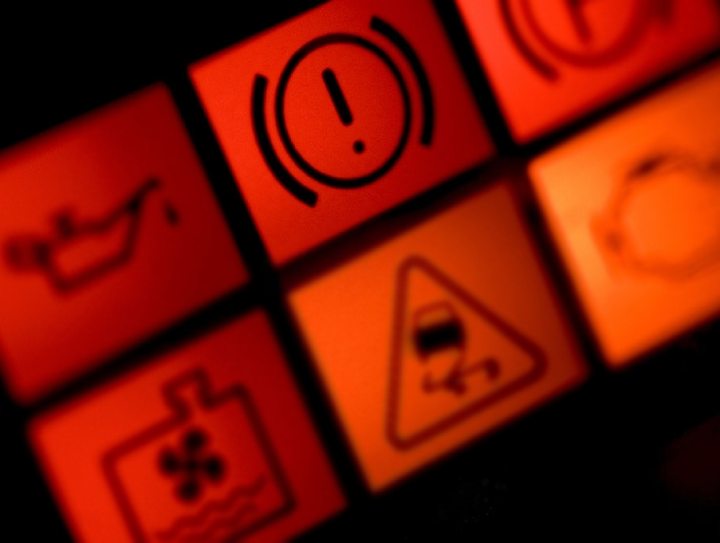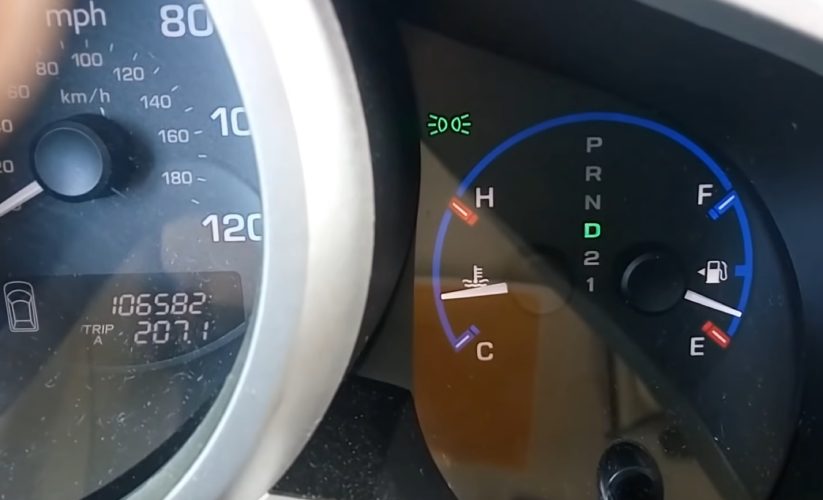As an experienced car mechanic, I’ve seen my fair share of check engine lights over the years. Some come on and stubbornly refuse to turn off, while others mysteriously disappear as quickly as they arrive. If your check engine light illuminated and then turned off again, you may be wondering what caused it and if your car is really alright.
The check engine light is your car’s way of notifying you that it has detected a problem. Anything from a loose gas cap to a faulty oxygen sensor can trigger it. When the light turns on, your vehicle’s on-board diagnostics (OBD) system has detected an issue somewhere in the engine, emissions system, or transmission. This causes the light to illuminate as a warning.
But just because the light turned off doesn’t necessarily mean the problem resolved itself. Rather, it means the conditions that first triggered the fault code are no longer present. The underlying issue likely still exists and will cause the light to turn on again once the right parameters are met.
Here’s Why Your Check Engine Light Turned Off
These are some of the more common causes for which your check engine light might illuminate and then go away:
Loose or faulty gas cap – A loose gas cap can trigger the check engine light. Tightening or replacing it turns the light off, but the underlying issue still exists.
Temporary sensor issue – A faulty connection or glitch may cause a sensor to malfunction briefly, illuminating the light before it resets.
Changing conditions – Aggressive acceleration in cold weather could initially trigger the light. It turns off when conditions return to normal.
Even if the light is off now, the problem that caused it to come on likely still exists. The vehicle’s computer turns the light off after several drive cycles without the issue reoccurring.
Main Causes of Check Engine Light Turning Off
Let’s go through each of these possible causes and see what you can do to get it fixed. It is worth mentioning that sometimes, driving the car to a specialist might be the right choice. A faulty sensor for example, can be a real pain to diagnose.

Loose or Faulty Gas Cap
One of the simplest explanations for an intermittent check engine light is a loose or faulty gas cap. Here’s why! Your fuel cap creates an airtight seal to contain evaporative emissions. If the seal becomes compromised, fuel vapors can leak out. This will immediately trigger your check engine light to switch on.
Replacing a loose gas cap and tightening it properly will remedy the leak. Since the problem that initially triggered the fault code is now fixed, the check engine light will turn off again. A loose gas cap allows evaporative emissions to leak when pressure builds in the tank. Tightening the cap stops the leak, signaling to the sensors that the issue is resolved.
However, you should still examine your gas cap to check for any cracks or damage. A worn-out cap can no longer achieve a tight seal. Replacing a faulty fuel cap with a new one provides an air-tight seal once again. The new cap prevents evaporative leaks, so the check engine light stays off. Always purchase replacement gas caps that are specifically designed to fit your vehicle’s make and model.
Intermittent Sensor Issues
Your vehicle has numerous sensors that monitor everything from engine temperature to exhaust emissions. If one of these onboard sensors temporarily malfunctions or experiences a glitch, it can trigger the check engine light. The sensor will then resume normal operation, causing the light to switch off again.
For example, an oxygen sensor monitors the oxygen content in your exhaust to regulate the air-fuel mixture. If an O2 sensor momentarily registers false readings because of a poor electrical connection, the check engine light will illuminate. The sensor can then reset itself and provide accurate readings again. With the faulty readings fixed, the ECU turns the check engine light back off.
Changing Driving Conditions
Certain driving conditions that affect engine load, speed, acceleration, or temperature can also lead to intermittent check engine lights. Aggressive acceleration and high speeds create more demand on the engine. Cold winter temperatures make engines work harder. Any of these conditions could initially cause a sensor to log a fault code and turn on the check engine light.
But when you resume normal driving habits and temperatures rise again, the check engine light turns off. The sensor no longer detects the issue under lighter engine loads and warmer conditions. Still, the underlying problem exists and will trigger the light again when conditions are right.
Don’t Ignore an Off Check Engine Light
Seeing your check engine light illuminate only to turn off again before you can inspect it further can leave you in a tough spot. Without the light on, you may be tempted to assume everything is fine again. But this is a risky wager that can lead to serious and expensive repairs down the road.
The Light Going Out Doesn’t Mean the Problem’s Fixed
When your check engine light turns on, it means an issue has been detected somewhere within the powertrain or emissions systems. This makes the light an invaluable early warning system. However, just because it turns off again doesn’t necessarily mean the problem resolved itself.
Rather, the onboard diagnostics system has protocols in place to turn the light off after several drive cycles without the fault reoccurring. But the underlying condition likely still exists and will eventually trigger the light again. The computer turns the light off to avoid illuminating for every minor hiccup. But it’s unwise to assume everything’s fine just because the light went out.
Read Any Codes While You Still Can
When the check engine light is on, even intermittently, crucial diagnostic trouble codes are logged in the vehicle’s ECU. These codes provide insight into what triggered the initial warning light. But once the light turns off, access to those codes disappears.
That’s why it’s vital to have stored trouble codes read promptly while the check engine light is still illuminated. Without the codes, identifying the root of the problem becomes exponentially more difficult and expensive. Since issues can worsen over time, diagnosing while the light is on gives you the best chance to catch problems before they escalate.
Prevent Bigger Issues Later On
Ignoring the check engine light runs the risk of causing extensive damage to the engine, emissions control systems, or transmission down the road. Small repairs made early on can save thousands in repairs later.
For example, a faulty oxygen sensor will eventually cause poor engine performance, increased emissions, and reduced fuel economy if neglected. A more severe issue like low oil or coolant levels can destroy an engine if the warning light is overlooked.
In Summary
In summary, while a check engine light that turns off again may seem harmless at first glance, ignoring it is a risky gamble. As we’ve covered, there are a few common reasons that can cause an intermittent check engine light. These include a loose gas cap, temporary sensor issues, and changing driving conditions. Even though the light goes off, the underlying problem likely still exists.
The onboard computer will turn the light off after some drive cycles, but this doesn’t mean issues detected previously have magically resolved themselves. It’s critical not to assume everything is fine just because the light is off. The best course of action remains getting potential causes properly diagnosed, even once the light has been extinguished.
Skipping this diagnosis risks more serious and expensive repairs down the line if small problems escalate. Reading any diagnostic trouble codes while the light is still illuminated provides crucial insight into what triggered it in the first place. Identifying issues early while the check engine light is on gives you the best shot at making minor repairs.
FAQ
Q: Why did my check engine light come on and then go off again?
A: There are a few common reasons this happens: a loose or faulty gas cap, an intermittent sensor issue, or changing driving conditions that triggered the initial light. Even though the light turned off, the underlying problem likely still exists.
Q: Is it safe to drive my car if the check engine light is no longer on?
A: It’s not recommended. The light turning off doesn’t mean the issue detected earlier has been fixed. Driving with a potential problem risks more serious damage or breakdowns.
Q: How do I diagnose the issue if the check engine light is no longer illuminated?
A: Have the diagnostic trouble codes read even if the light is off again. Codes stored in the ECU provide insight into what triggered the initial light. A mechanic can then properly diagnose the root cause.
Q: What should I do if the check engine light keeps turning on and off?
A: Consistently intermittent check engine lights point to an ongoing issue. Don’t ignore it – have it fully diagnosed even if the light goes out again. Repairing the problem can prevent it from escalating.
Q: Could the problem fix itself and turn the check engine light off?
A: It’s unlikely a serious issue detected would resolve on its own without repairs. Assume the problem still exists and schedule a diagnostic test immediately.
Q: How soon do I need to have my car looked at after the check engine light turns off?
A: As soon as possible. Early diagnosis gives the best chance to address minor issues before they become larger, costlier repairs.
Q: Will the check engine light eventually come back on if I don’t get the issue fixed?
A: Yes, most likely. The computer will illuminate the light again once the conditions that initially triggered it are present.
Engineering Coordinator with 5+ years of experience in the automotive manufacturing industry. Currently supporting vehicle development and new model launch activities at Honda Development and Manufacturing of America. Skilled at managing engineering teams, overseeing prototype builds, coordinating testing, and driving continuous process improvements. LinkedIn









